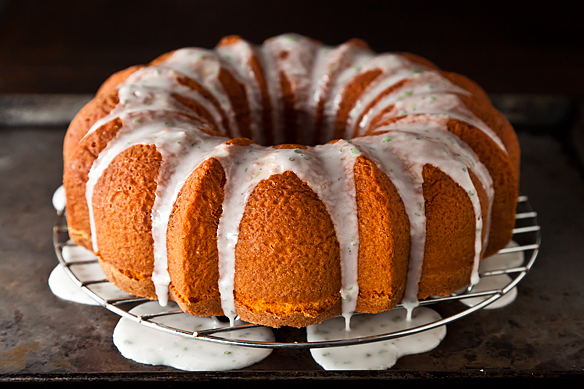Poultry
March 19th is National Poultry Day
To clebrate here are several recipes for you to incorporate into your at home cooking cycle that offers a mix of baking, roasting, grilling, and braising.Can you name the top three types of poultry consumed in the United States?
Visit our Facebook page for the answers!
Roasted Lemon Chicken
Yield: 2 Servings
Ingredients
2 bone-in chicken breast halves, skin removed
2 teaspoons Dijon mustard
1/2 teaspoon grated lemon peel
1 garlic clove, minced
1/4 cup fresh rye or whole wheat bread crumbs*
1/2 teaspoon paprika, preferably smoked
Instructions
1. Heat oven to 400°F. Place chicken on small foil-lined rimmed baking sheet. Combine mustard, lemon peel and garlic; spread over top of chicken. Pat bread crumbs over mustard mixture; sprinkle with paprika.
2. Bake 25 to 35 minutes or until chicken is no longer pink in center.
TIP *To make fresh bread crumbs, tear day-old bread into pieces; place in food processor. Pulse 30 to 60 seconds or until coarse crumbs form. One bread slice yields about 3/4 cup crumbs.
Roasting the chicken at a high temperature keeps it moist and juicy while allowing the bread crumb coating to crisp and brown.
PER SERVING: 175 calories, 4.5 g total fat (1 g saturated fat), 28 g protein, 3.5 g carbohydrate, 75 mg cholesterol, 220 mg sodium, 1 g fiber

Turkey Osso Bucco
Turkey has lots a flavor and great texture. Turkey thighs braised with vegetables and herbs makes this dish
worth every moment of waiting for as its aromas tease you.

Pri Pri Chicken Wings
With spring just hours away there is no excuse not to start grilling. Try these wings as an appetizer or the main event.
These wings would go great with a broccoli slaw.

Nutty Coconut Chicken
This Chicken dish is saturated in sweet coconut, almond and walnut flavor.
Served on a bed of vegetable basmati rice pilaf or tossed into a apple spinach salad, the crunch of this pan-fried chicken
will add a heavenly texture.
What do you know about Bell Peppers?
Not only are bell peppers delicious to eat and beautiful to look at, but they are also packed with nutritional benefits. All bell peppers are high in vitamin C with the red pepper having more than twice as much as the green pepper. The bell pepper is also a wonderful source of vitamin A, vitamin B, antioxidants and carotenoids.
The bell pepper, also known as sweet pepper or capsicum, is of the species Capsicum annuum and native to Mexico, Central America and northern South America. Bell peppers are botanically fruits, but in culinary contexts they are usually considered to be vegetables.
Bell peppers can be bought year-round, but they are most abundant and tasty during the months of August and September. Colors range from the burgeoning colors of green to yellow, and ripen to the sweeter-tasting colors of red, orange, and sometimes purple and brown, depending on the variety.
Picking a good pepper is easy: they should have a smooth and tight skin (no wrinkles, or soft or bruised spots), plus bright color, and feel firm and solid. A look at the stem is another place to peek: it should appear fresh, green, and not dry or desiccated.
Don’t wash a pepper until use: ideally store unwashed peppers in a cool place covered with a kitchen towel, or second best is in the vegetable compartment in your refrigerator (but not in plastic, which will create excess moisture). Some even freeze them, either whole, or cleaned, deseeded, and chopped
Peppers can be eaten raw or cooked. If eating it raw, wash it first, then core it (cut around the stem with a paring knife). Cut the pepper in half lengthwise and then remove any seeds and the white core/ribs—you can try shaking the seeds into the garbage. Don’t be tempted to use water to remove the seeds: it will just waterlog it. The pepper is then ready to be cut into strips, chopped, or diced. For those want to stuff a pepper, cut it horizontally instead of cutting it lengthwise then remove the seeds and core. One precaution: even though peppers are typically sweet, be sure to wash your hands well when all is said and done—don’t touch your eyes!
Peppers are also delicious roasted. They can be grilled with tongs over a gas burner until blistered and the skin starts to blacken, or in the broiler: simply put cut pepper halves on a cookie sheet and roast. The best way to peel the skin is to then place the peppers in a bowl covered with plastic wrap, or in a paper bag. Steam for about 15 minutes, and then peel the skin off with your fingers (or a knife if they’re too hot).
Peppers can also be stuffed, or sautéed—peppers are a delicious addition to a stir-fry. Peppers also pair well with meat, like a classic Italian sausage and peppers dish, or with steak. Some like to puree peppers into dips, like hummus, or into soups
Here are a few recipes to try from Sauver.com:
Poor Man's Caviar
Black-eyed peas, scallions, and both red and green peppers combine in a salad that's equally delicious spread on bread or spooned from bowl.
Baked Chicken with Peppers
This vibrant baked chicken and peppers dish is as simple as it is classic.
Peppers in Tomato Sauce
Serve these preserved peppers over pasta or chicken for a bright meal.
Pesto Calabrese
This Southern Italian pesto gets its hue from tomatoes and red bell peppers.
Green Pepper Butter
Minced roasted green pepper adds irresistible flavor to this savory compound butter.
Muhammara (Roasted Red Pepper, Walnut and Pomegranate Molasses Dip)
This Middle Eastern dip is one part sweet, one part tangy, and one part spicy; it's the perfect combination for slathering on sandwiches or serving with homemade pita chips.
Sweet Pepper Salad
Roasted red and green peppers get a kick from sugar and vinegar -- great served with grilled meats.
Eggplant Stuffed Peppers
Bell peppers are blistered over a flame before being stuffed with eggplant, breadcrumbs, and anchovies.
photo credit: wallyg via photo pin cc
Why we love washing produce and you should too!
Four Food Remedies for Dry Skin
Extra-virgin unrefined unprocessed olive oil has lots of vitamin E that is a famous antioxidant. It prevents oxidation in skin cells so, as a result, skin looks much younger and less wrinkles appear in the skin surface.
The Four Natural Enemies of Olive Oil
A high-quality
extra virgin olive oil is a must-have staple in many kitchens, partly
because its
delicious flavor and versatile nature allow it to be used in countless
ways.
For starters, extra virgin olive oil is perfect in homemade salad
dressings, on
roasted vegetables and as a key ingredient in a wide range of recipes.
What many
people do not realize about olive oil, however, is that it is actually
a
perishable fruit juice with some finicky preferences. This mean proper
care and
precautions must be taken in order to keep your olive tasting and
smelling the
way it should.
The
Four Natural Enemies of Olive Oil
- Time. Because it is a perishable fruit juice, olive does not have an unlimited shelf life. Try to choose bottles with a clearly marked “harvest date” and make sure that date occurred within the last 18 months to 2 years. It is also recommended that you only buy as much olive oil as you can use within 15 – 30 days of opening.
- Temperature. Heat will cause
olive oil to degrade quickly. Therefore, do not store your olive oil
near your oven or cooktop because the higher ambient heat in those
areas will cause it to break down faster.
- Oxygen. Like a fine wine, exposure to oxygen for any length of time will cause your olive oil to turn rancid. To prevent this, store your olive oil in an airtight container with the lid securely fasten whenever it is not in use.
- Light. Exposure to
light will also cause olive oil to degrade more quickly. Avoid
storing your olive in clear bottles or out on your counter tops. Dark
green bottles are the best for blocking out sunlight, but other dark
bottles will also work. Storing bottles inside a cabinet when not in
use can also prolong the life of your olive oil. A cool, dark place is
your best bet to prolong the life of your oil.
Avoiding the
four natural enemies of olive oil will keep it fresh and full of flavor
for a
longer period of time. With a little bit of effort, you can preserve
the delicious
natural flavors of your quality olive oils.
Grapefruit, Love them or not
Why Ch- CH- Chia Seeds?
One ounce of Chia Seeds have an impressive 5 grams of protein and 10 grams of fiber amounting to about 138 calories.
Chia seeds are high in Omega-3 fatty acids.
promote a healthy digestive tract — relieving constipation, diarrhea, and inflammation.
are gluten-free and grain-free.
are an excellent source of magnesium.
Most impressive is these little seeds can help you stay hydrated and stave off hunger because they soak up water, then slowly release it as it is digested.
Chia seeds can be eaten by the handful as a snack, added to a salad, smoothie or mixed in with rice pilaf.
Chia seeds have a neutral flavor and a nutty texture which makes it flexible to use in a wide range of recipes.
Here are five ways to use Chia seeds:
To Make Homemade Energy Gel
For children and especially active adults. Add a couple tablespoons of chia seeds to a cup of coconut water. Let sit for about ten minutes and you’ll have an incredible energy gel! Chill, and you’ll have an amazing gel for hydration and energy with no fake colors, flavors and GMO corn syrup.
As an Egg Substitute
Chia seeds are a great egg replacer in baking or cooking. Finely grind Chia Seeds. Blend one tablespoon ground chia seeds with three tablespoons of water. Let sit for 15 minutes and use the gelled chia seeds to replace the equivalent of one large egg.
To Thicken Soup or Gravies
In place of cornstarch or thickening agents try thickening your culinary creations by mixing Chia seed powdered or whole with water. Start with one tablespoon of water to two tablespoons of chia at a time to reach the desired thickness.
Use as a Filling for meatballs, meatloaf or burgers
Combine Chia Seeds and water. The seeds will quickly form a gelatinous coating, which will absorb the water. Let the seeds set, to thicken. About 15 minutes, you will have a thick mixture, that can be added to the meat mixture, when it is ready to mix. This will help bind and add moisture to the meat.
Turkey Circus Burgers
6 Servings
Ingredients
1 ½ tablespoons chia seeds
½ cup water
¾ cup onions, medium dice
1 tablespoon minced garlic
1 tablespoon grapeseed oil
1 tablespoon water
1 ½ pound lean ground Turkey
½ cup coarsely grated carrot
1 tablespoon finely chopped cilantro
1 tablespoon finely chopped flat leaf parsley
½ teaspoon Emeril’s original essence seasoning
¼ teaspoon sea salt
¼ teaspoon ground black pepper
Directions:
Combine Chia Seeds and water. Stir constantly, for 45 seconds. The seeds will quickly form a gelatinous coating, which will absorb the water. Let the seeds set, to thicken.
Heat oil a sauté pan over medium heat. Add onion and sauté stirring and allowing onions to cook until translucent.
Add minced garlic, and stir, to the onions and allow to cook for another minute. Remove from heat, and set aside.
In medium mixing bowl, add ground meat, grated carrots, caramelized onion/garlic mixture, Chia Seeds, and seasonings. Combine well, with gloved hands or large spoon.
Form into 6- 4 ounce patties, that are about 1/2 inch thick. These can be immediately cooked, on the hot grill or in a large nonstick pan for approx. 3-4 minutes per side, depending on your desired doneness.
Serve on you’re a toasted bun with avocadoes, tomatoes and lettuce and Russian dressing or your favorite toppings.
Use as a Breading
Use chia seed to coat fish or chicken for a crispy coating and bake. It toasts up well and provides a nutty, crunchy flavor. Mix chia seeds with crushed almonds and almond flour and seasonings coat chicken and or fish spray with cooking oil and bake on a nonstick cooking tray. Be creative…
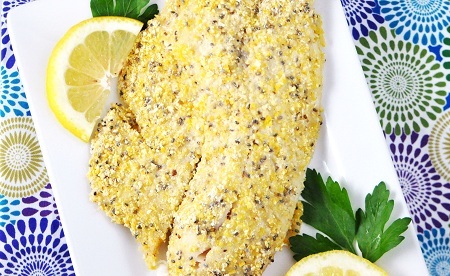
Cornmeal & Chia Seed Crusted Tilapia
Yield: 4 servings
Ingredients:
4 boneless tilapia fillets patted dry
½ teaspoon old bay seasoning
½ teaspoon ground black pepper
1.5 Tablespoons Mayonnaise
3/4 cup yellow cornmeal
1/2 teaspoon chia seeds
1/2 teaspoon garlic powder
olive oil cooking spray
Directions:
Preheat the oven to 400 degrees Fahrenheit.
On a plate, toss together the cornmeal, chia seeds, garlic powder and pepper.
Lightly spray a foiled line baking sheet with oil set aside.
Sprinkle old bay seasoning over fish. Spread a little mayonnaise one one side of each piece of fish, and then invert the fish into the cornmeal mixture. Press firmly and then flip the fish over and place onto the baking sheet.
5. Bake for 15-20 minutes depending on the thickness of the fish.
Note: Do not add more chia seeds or else you end up with an overly crunchy fish instead of one with a nice texture.
Recipe adapted from Savoring the Thyme
Fight a Cold with Zinc
To fight a cold ....
Zinc works better than vitamin C to put the brakes on a cold.
Yes, Vitamin C boost the immunity, but studies show zinc shortens a cold by a day and a half.
Just start taking Zinc supplements or comsuning Zinc enriched foods within 48 hours of the first tickle in your throat.
Oysters and Wheat Germ are foods that have the highest percentage of Zinc.
Check out these recipe to help shorten your cold .
Oyster Stew
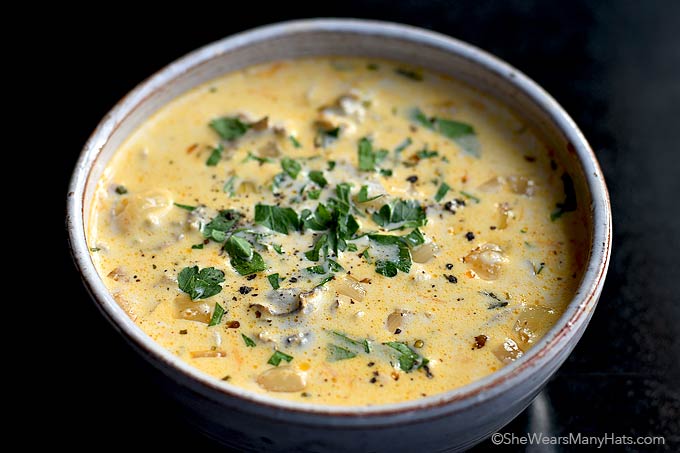
Spinach Parmesan Oysters
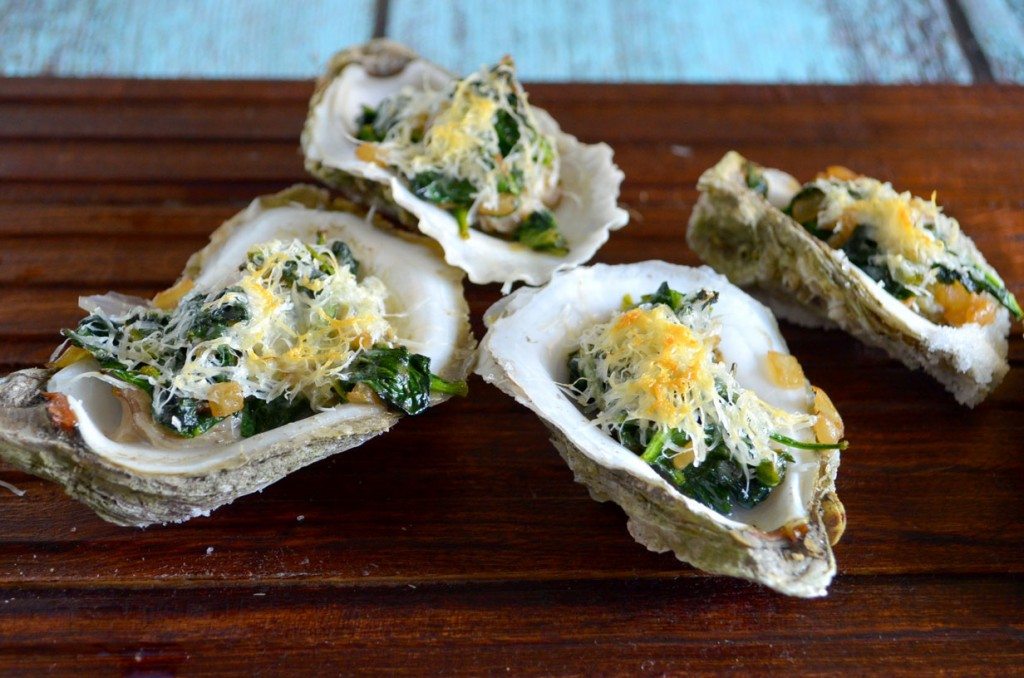
Thai Vegetable Curry with Wheat Germ

Chocolate Truffle Pie with Wheat Germ Crust

Lobster and Crab are also high in Zinc.
Zinc is an essential mineral required by the body for maintaining a sense of smell, keeping a healthy immune system, building proteins,
triggering enzymes, and creating DNA. Zinc also helps the cells in your body communicate by functioning as a neurotransmitter. The body does not store Zinc.
A Cooking Project with the Kids!
One of the challenges of a snow storm is keeping the kids busy. Between the games, the movies and perhaps playing in the snow, cook with your kids.
Here are a few recipes to try. Also one for homemade play dough.
Start with this simple soup recipe
Chicken Noodle Soup

Make use of the snow for a tasty treat!
Snow
Ice Cream
For this recipe you’ll need clean fresh
snow. You can either
collect it as it falls in a bowl or choose the best place to collect
clean
house outside our house.
This is a classic recipe that works really
well because the
sweetened condensed milk is thick and helps hold quickly melting snow
together.
Ingredients
- 1
gallon or big bowl of clean snow
- 1
14-oz can of sweetened condensed milk
- 1
tsp vanilla extract
Directions
Mix the ingredients together and eat the
snow ice cream.
Note: The condensed milk works well because of its thick texture.
If you don’t have sweetened condense milk use heavy cream, soy milk or milk.
Also add a cup of sugar to the recipe to sweeten.
You can
also make Snow Cones using syrups made from fruits and
juice that you have on hand in the blender.

Makes 8 Servings (about 2 tablespoons per serving)
Ingredients
- 1 cup fresh or frozen blueberries
- 1/4 cup water
- 2 tablespoons honey
- 1 teaspoon lemon juice
1. Place the blueberries, water, honey, and lemon juice in a blender, and blend until well combined.
2. Pour the syrup into a squeeze bottle or a measuring cup and pour over snow packed into a cup.
Nutrition Information per Serving (2 tablespoons): 15 calories, 0g fat (0g saturated), mg sodium, 4g carbohydrate, 4g sugar, 1g fiber, 0g protein
Here is another recipe for Mango Snow Cone Syrup. Use these recipes as a guideline for our creatiiviy
Both recipes adapted from Makeover Moms.
Keep the hands busy making dough.........
Homemade
Play dough
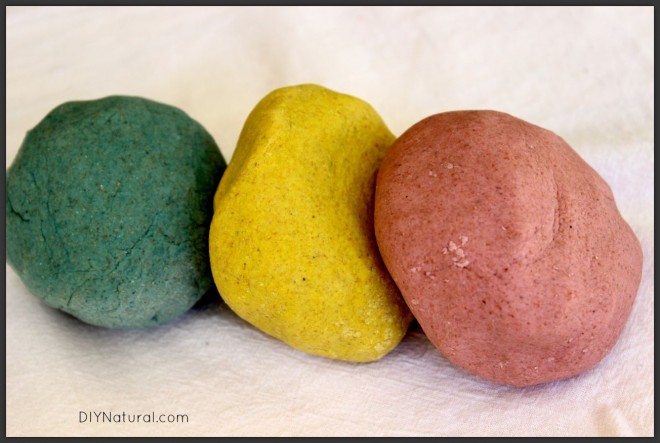
Ingredients
1 cup of flour (whatever kind you have on hand)
¼ cup of salt
½ cup of water
3 to 5 drops of natural food coloring
Instructions
Step 1: Mix together the flour and the salt.
Step 2: Mix together ½ cup of warm water with a few drops of food coloring.
Step 3: Slowly pour the water into the flour mixture, stirring as you pour. Stir until combined, then knead with your hands until the flour is completely absorbed. If the dough is too sticky, add more flour until it doesn’t stick at all.
Most of all have fun making memories with the kids Feel free to post on this blog to share your experience.




















